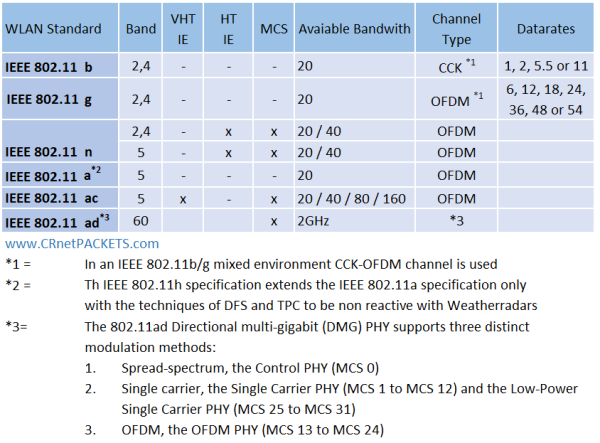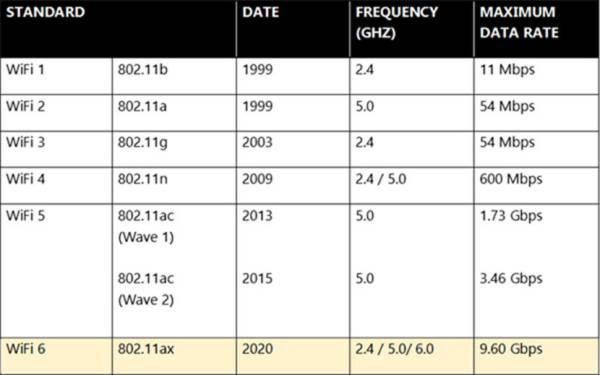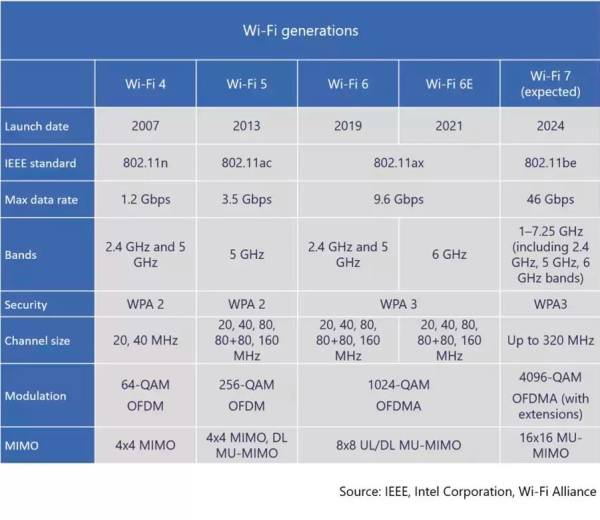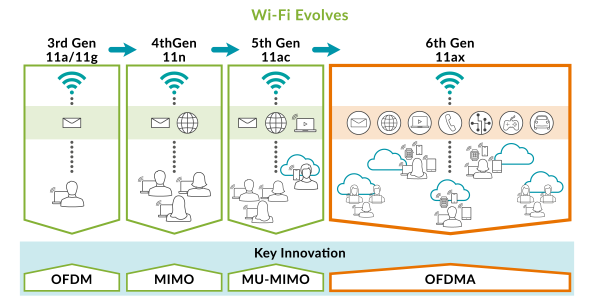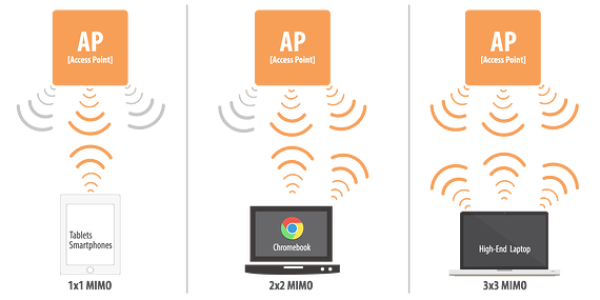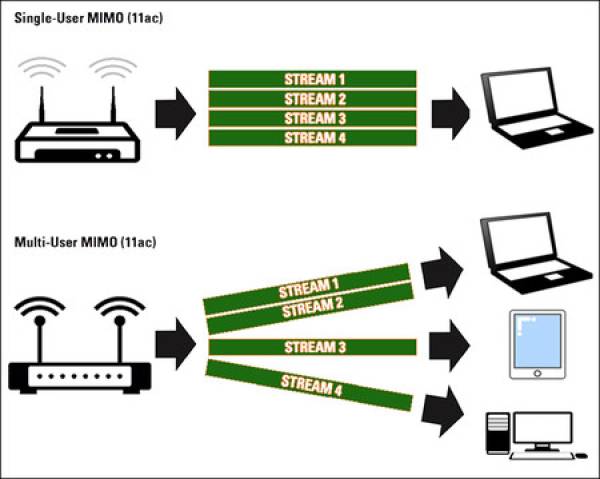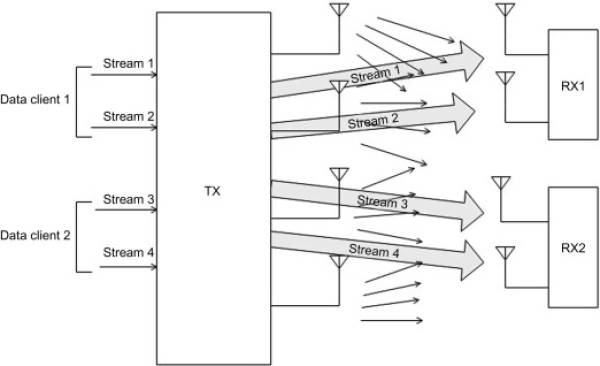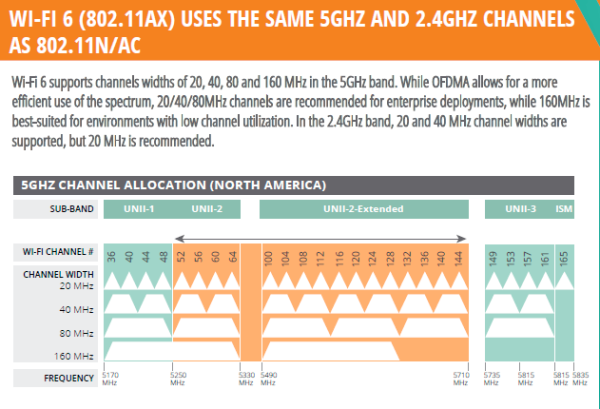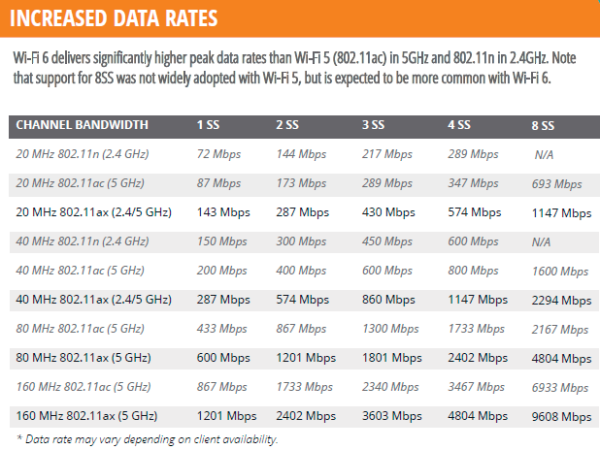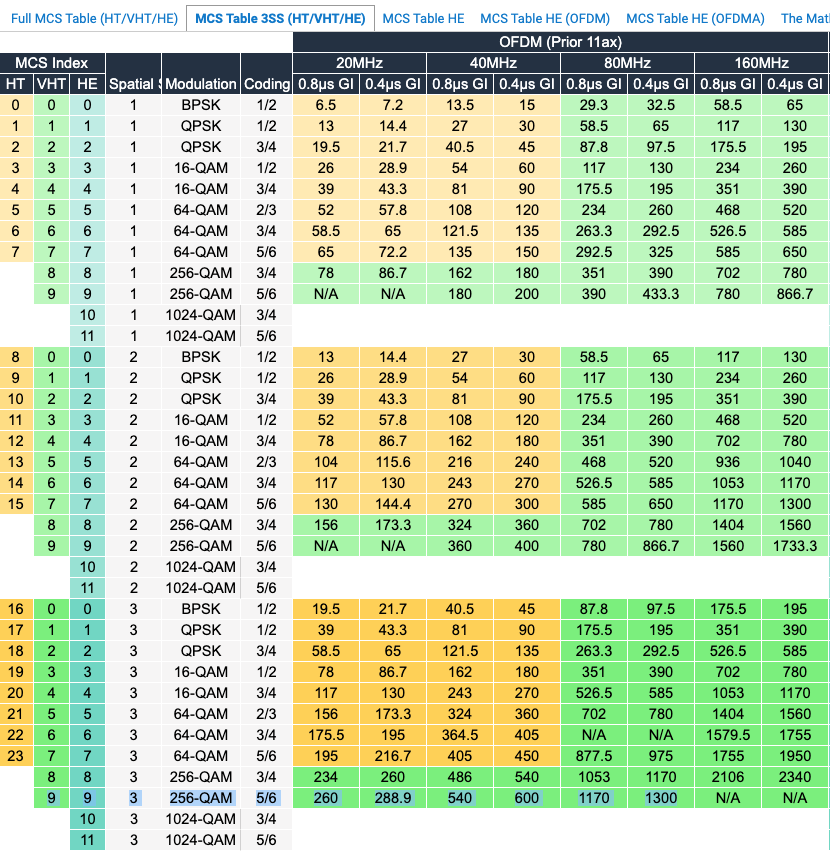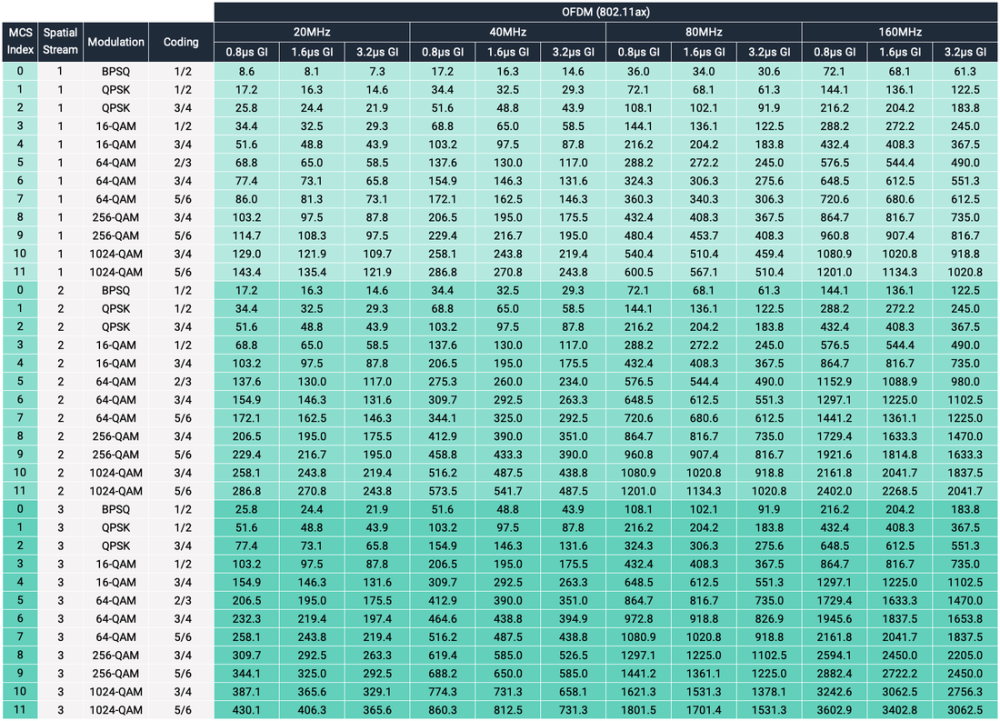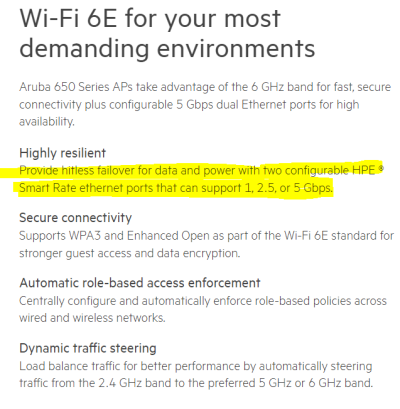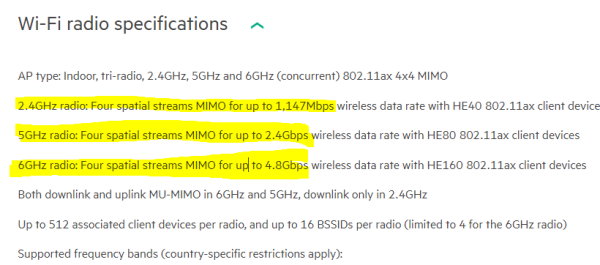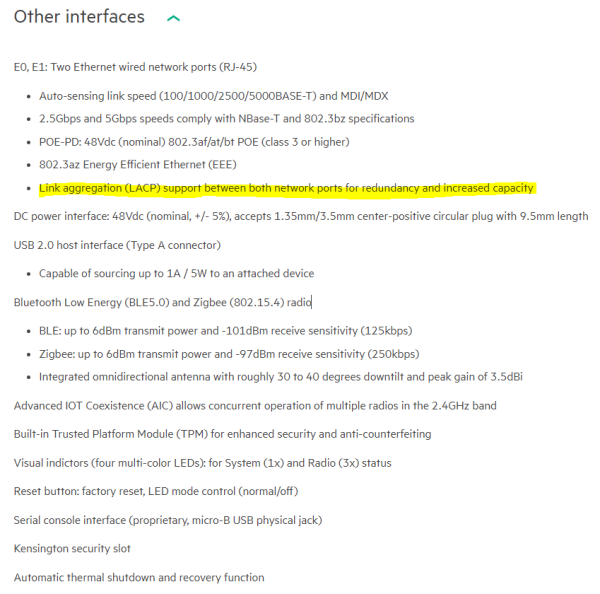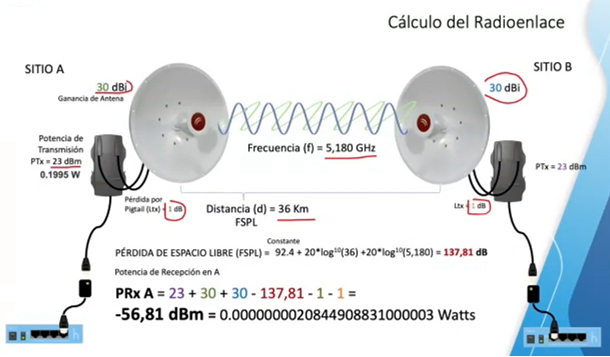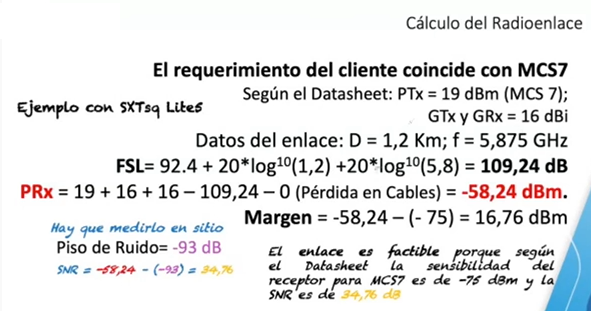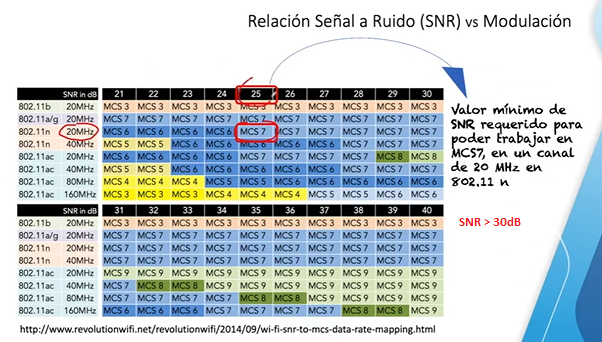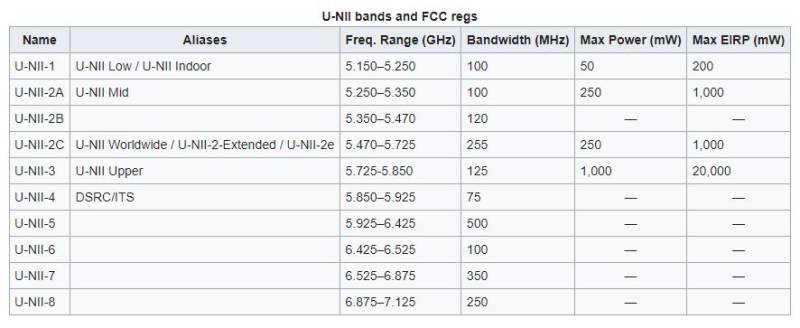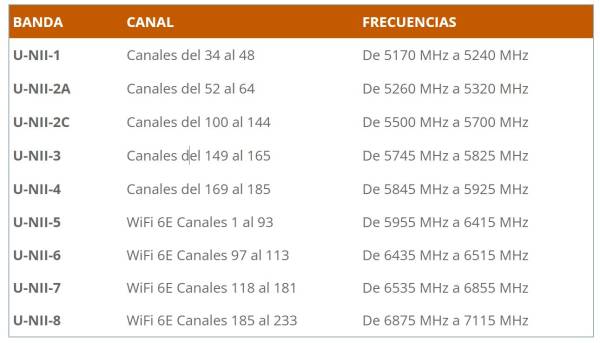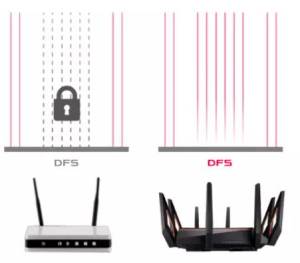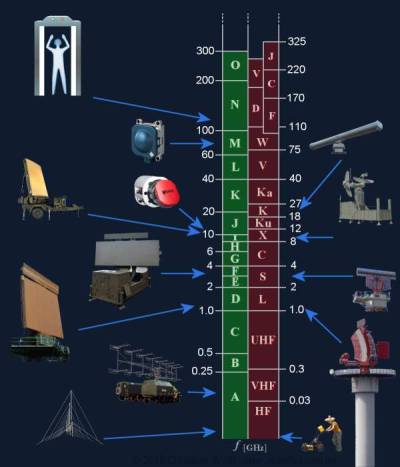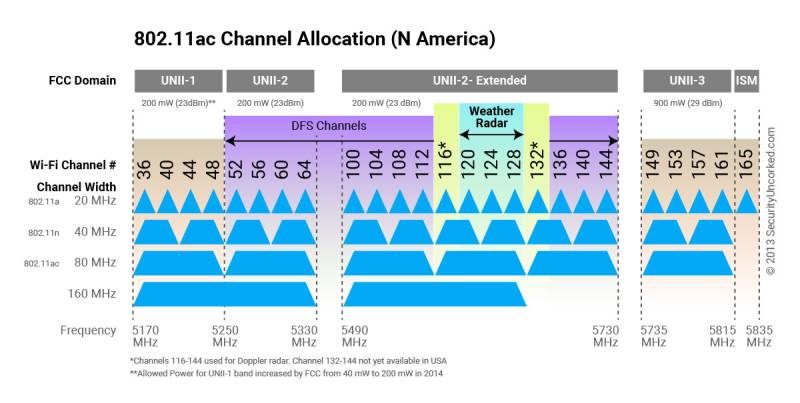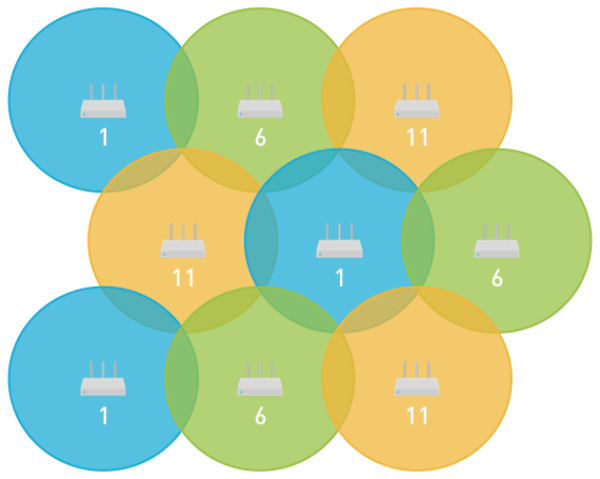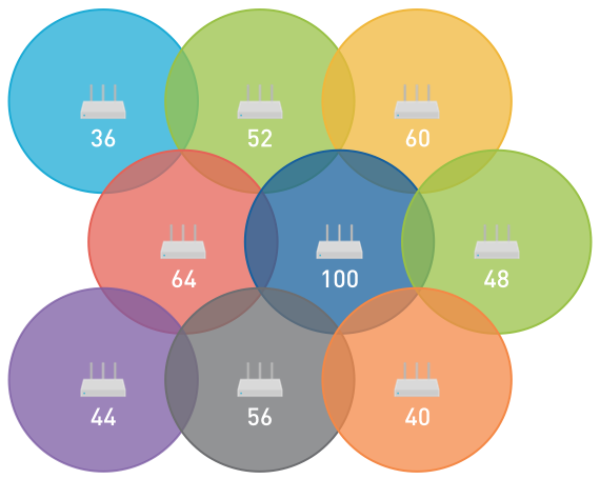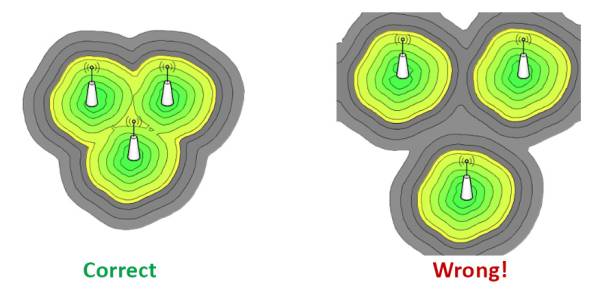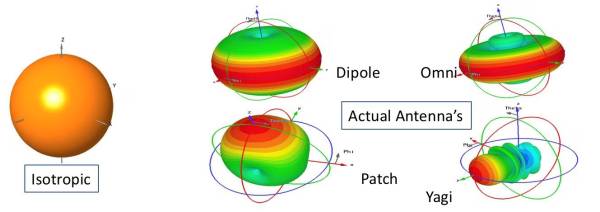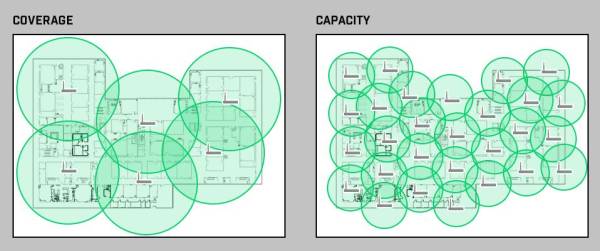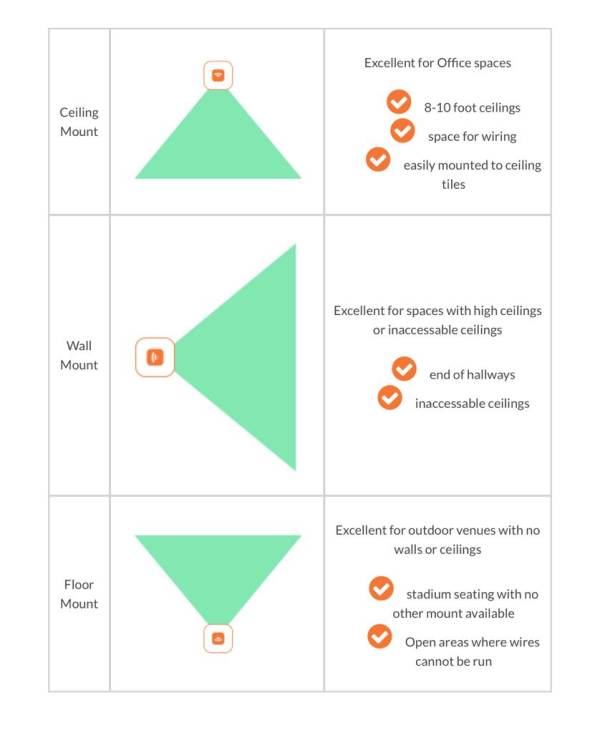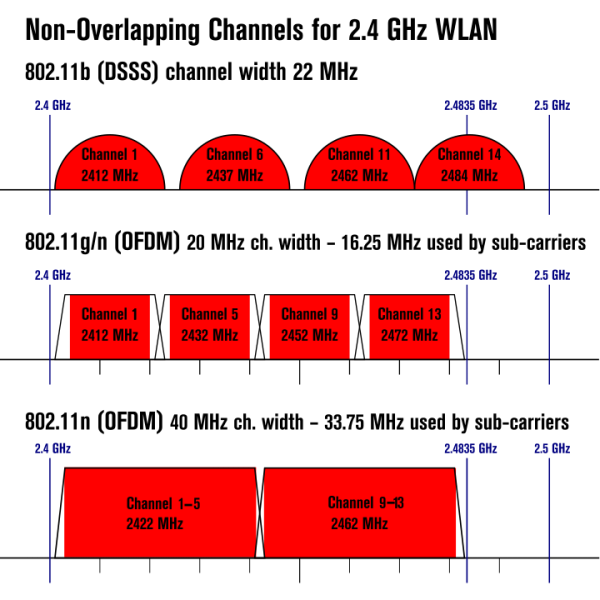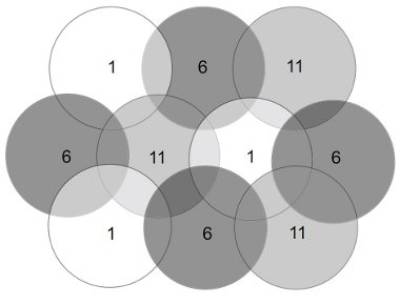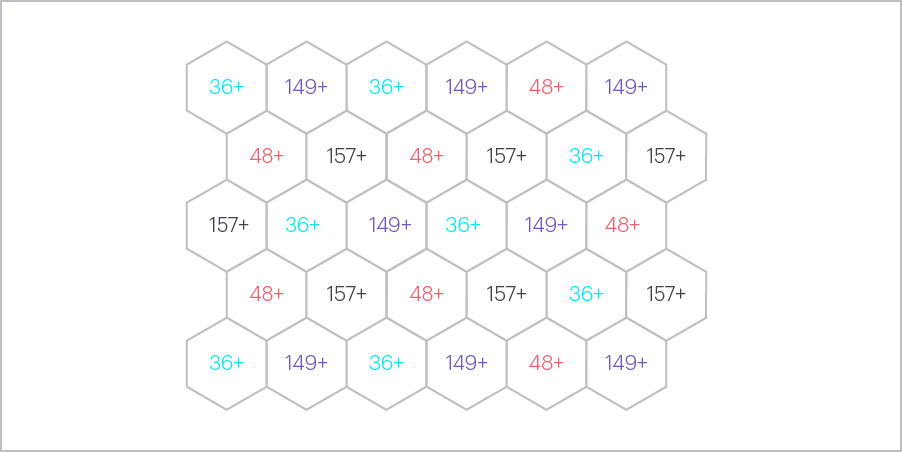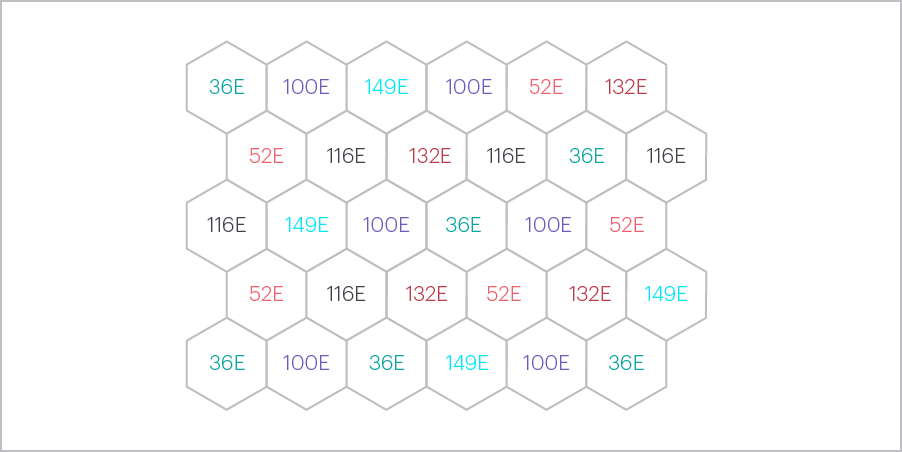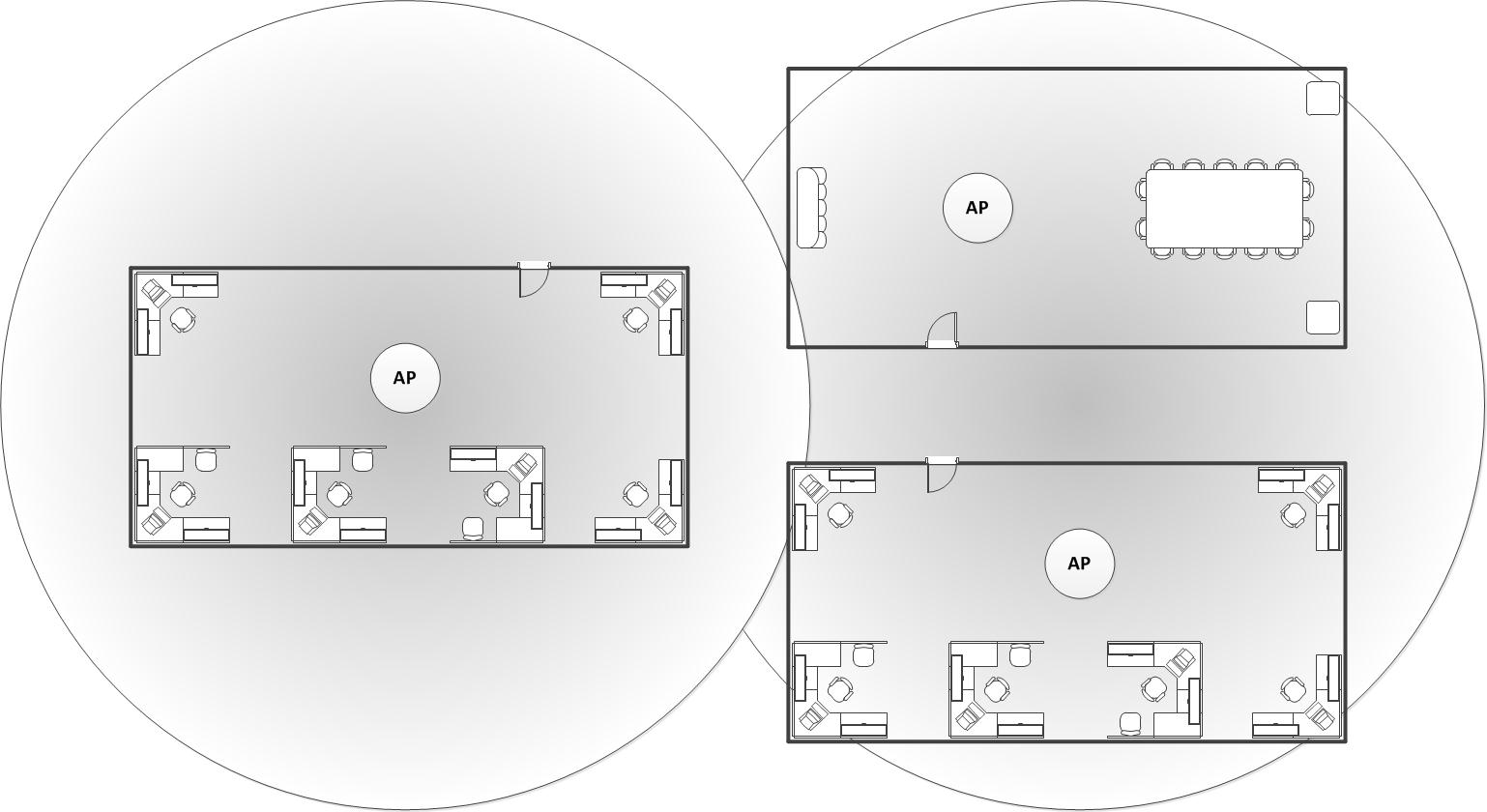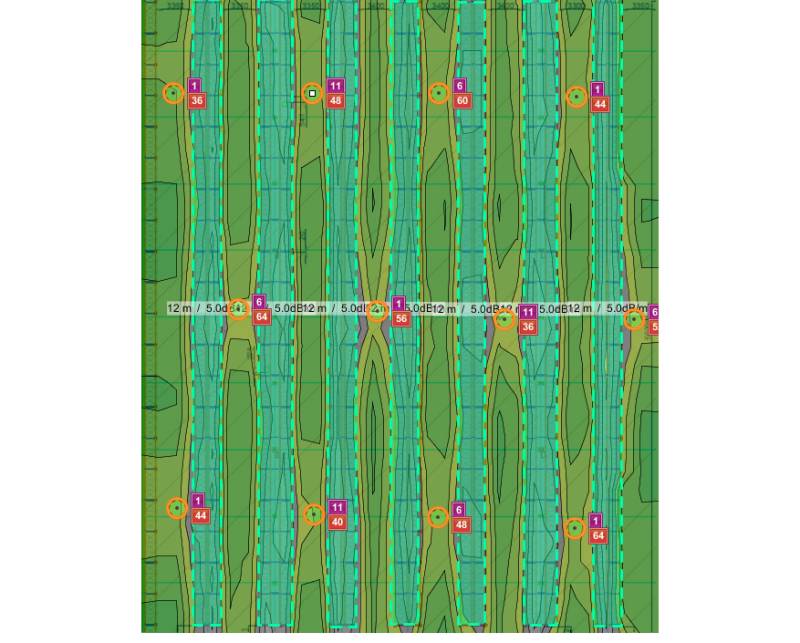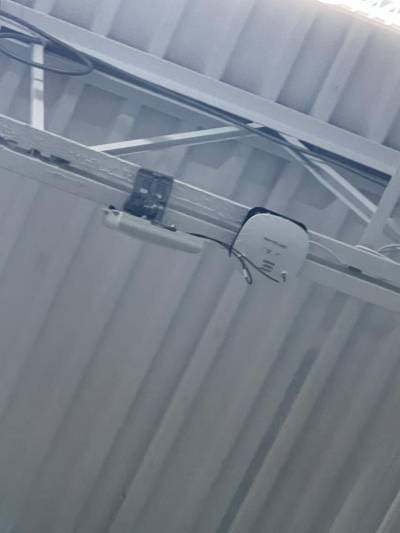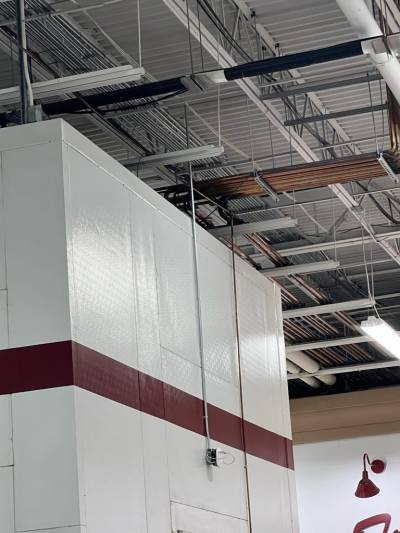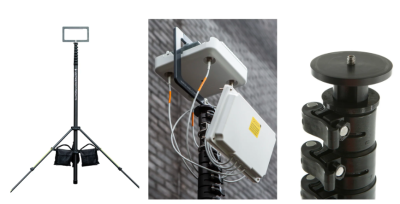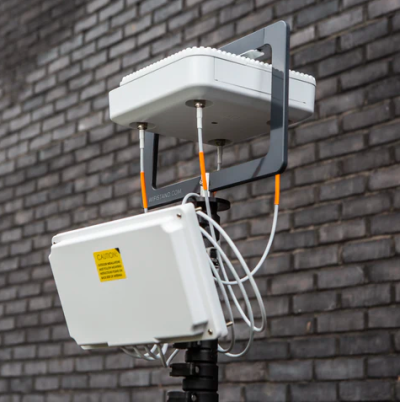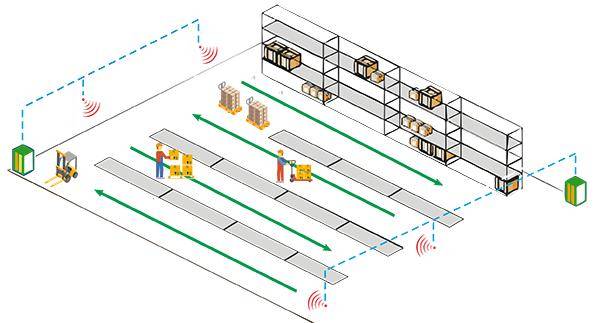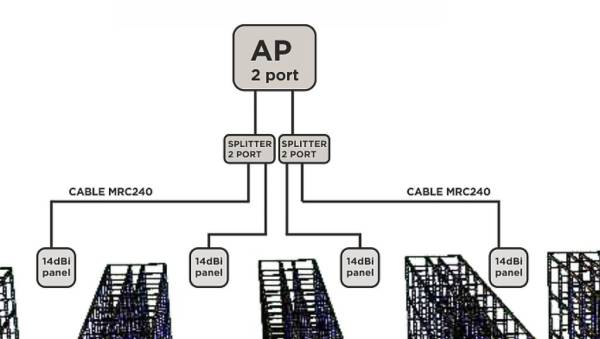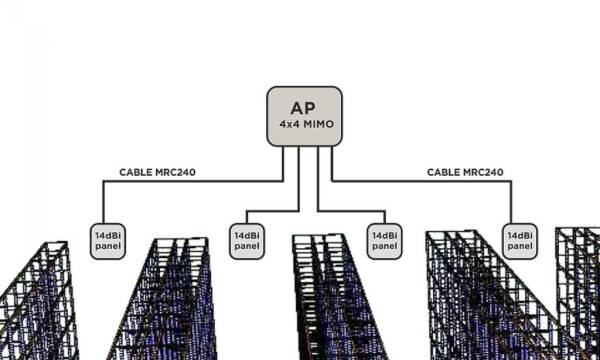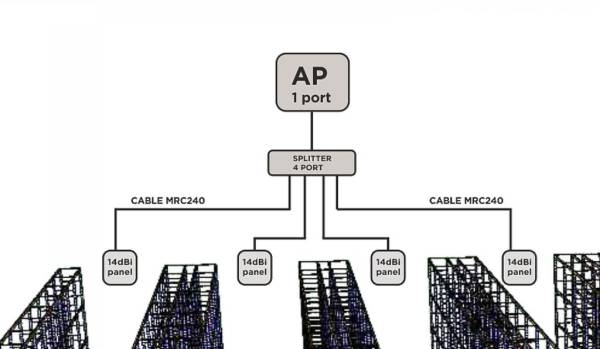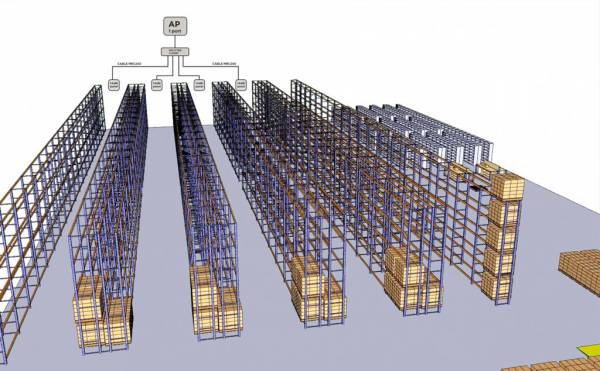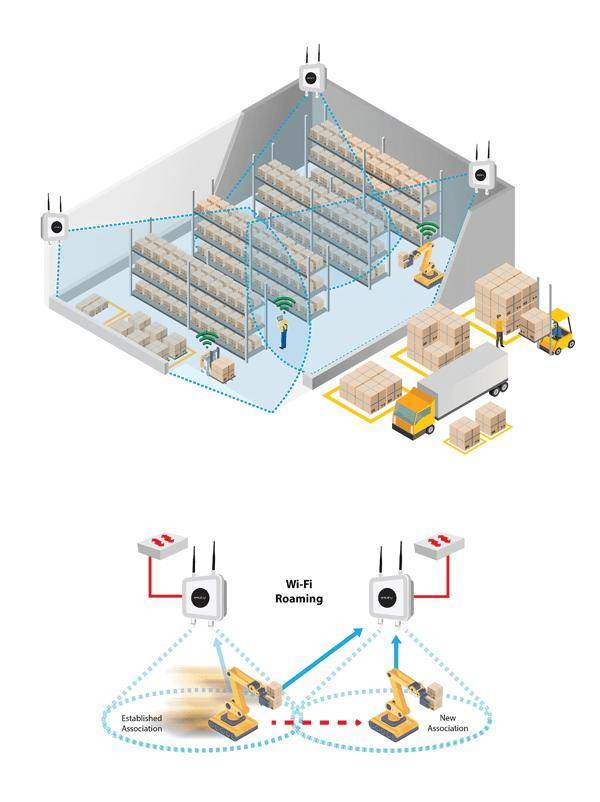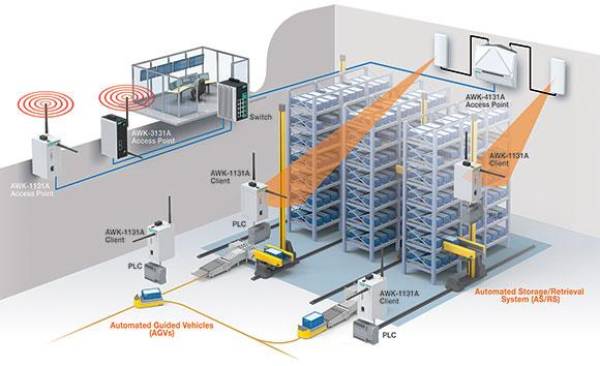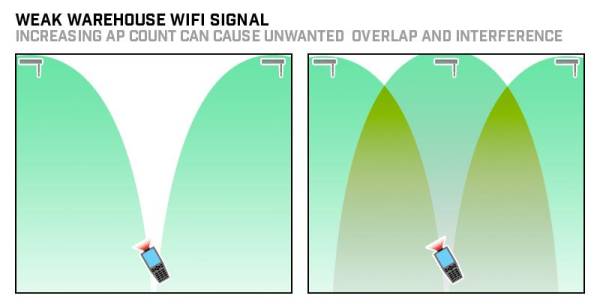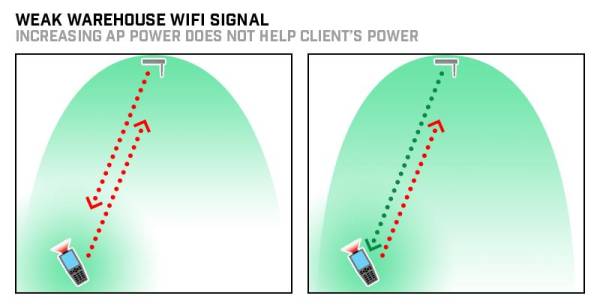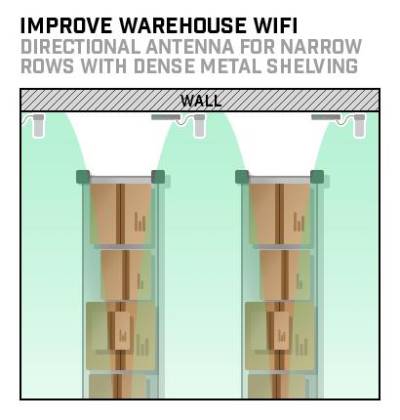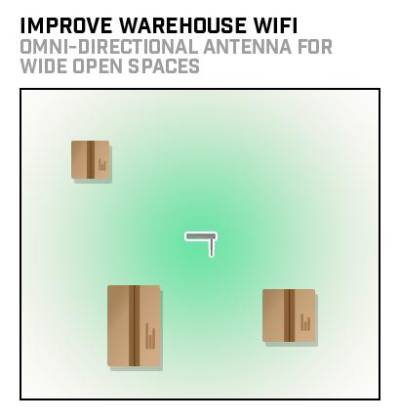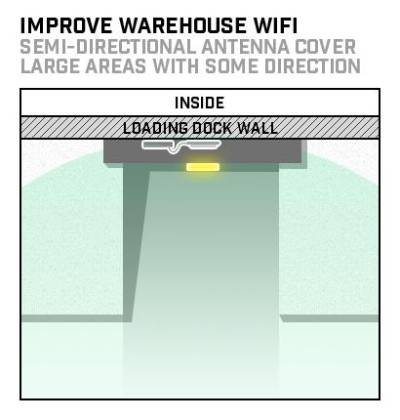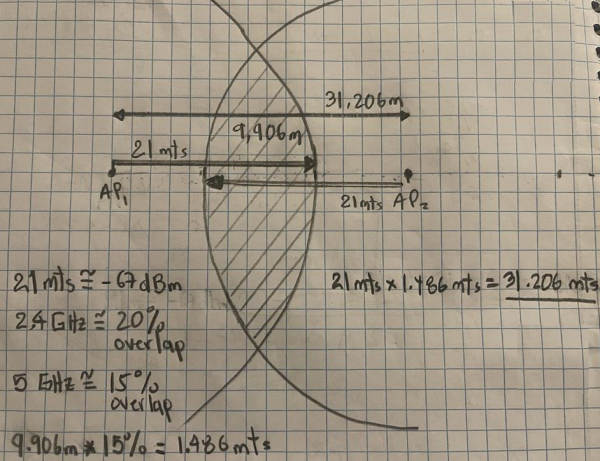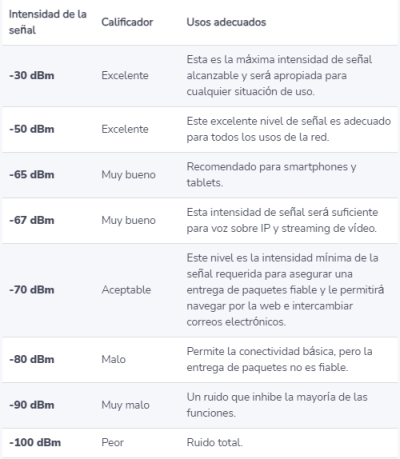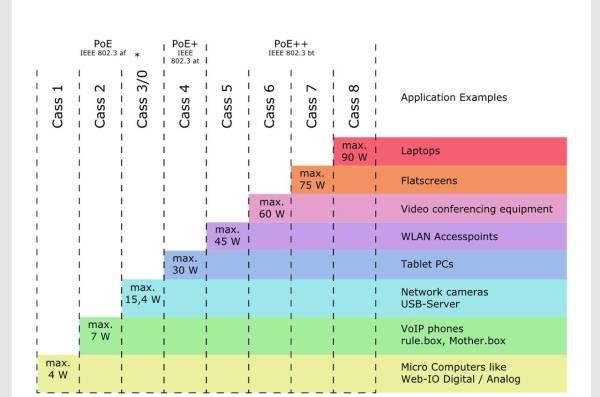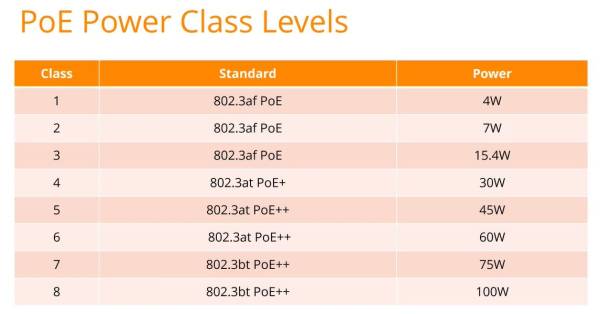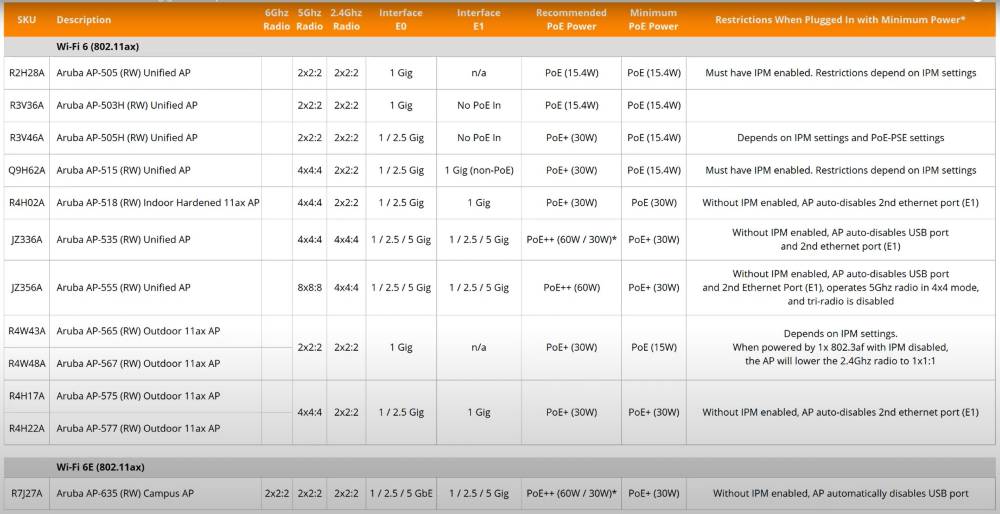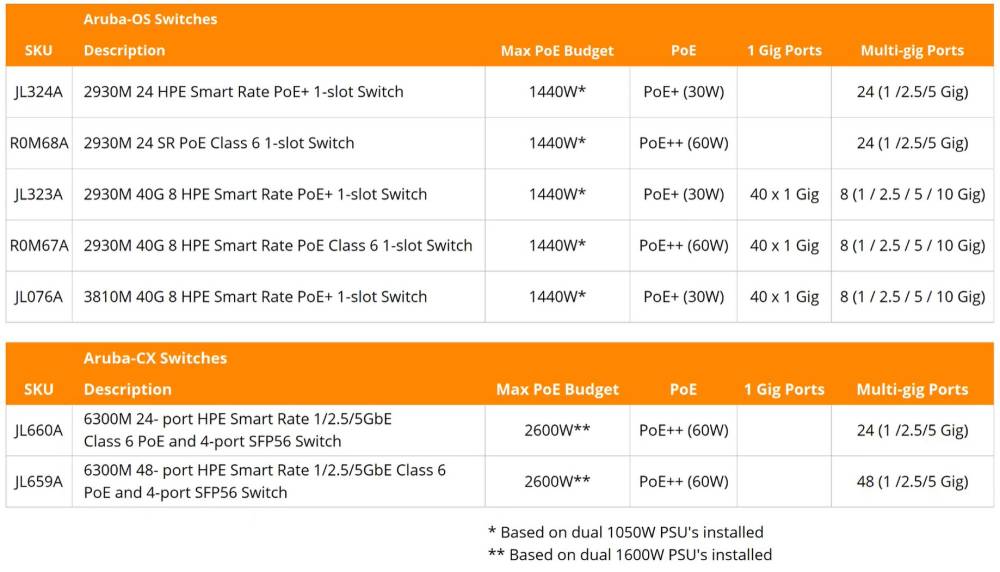Table of Contents
Wi-Fi Generations
- Very High Throughput (VHT) Multi-User Multiple Input Multiple Output (MU-MIMO) Communication in 802.11ac.
- High Throughput Modulation and Coding Scheme (HT-MCS), Used by 802.11n. Represented by an integer in the range of 0-76.
- Very High Throughput Modulation and Coding Scheme (VHT-MCS), Used by 802.11ac. Represented by an integer in the range of 0-9.
- Modulation Scheme Defines the phase and amplitude required for bit computing, from BPSK to QPSK to 16-QAM, 64-QAM, and 256-QAM.
- Coding Rate of bits transferred and Forward Error Correction. A 1/2 Coding means two bits are transferred, and one is received. Minimizing the coding scheme would entail sending the data faster while losing robustness.
- Data Width Specifies the channel used: 20MHz, 40MHz, 80MHz, and 160MHz.
- Guard Interval Waiting time or pause between each packet transmission. 802.11n has 400ns, and 802.11ac has 800 ns. The smaller the guard interval, the faster the throughput.
- Minimum SNR and RSSI Determines the minimum SNR and RSSI required for a specific MSC index.
- OFDMA is essentially a type of OFDM for multiple users. It allocates in both the time domain and the frequency domain, allowing for multiple users—even those with widely varying use patterns or data loads. By comparison, OFDM can allocate only sequentially.
What are the key differences between OFDM and OFDMA for multiple access?
If you are interested in wireless communication technologies, you may have heard of OFDM and OFDMA. These are two methods of dividing a radio channel into multiple subcarriers, each carrying a part of the data. But what are the key differences between them, and why do they matter for multiple access? In this article, you will learn the basics of OFDM and OFDMA, and how they enable efficient and flexible transmission of data over wireless networks.
What is OFDM?
OFDM stands for orthogonal frequency division multiplexing. It is a technique that splits a high-bandwidth channel into many narrow-band subcarriers, each with a different frequency. The subcarriers are orthogonal, meaning they do not interfere with each other. This allows OFDM to use the channel more efficiently and avoid inter-symbol interference, which is a common problem in wireless communication. OFDM also supports modulation schemes such as QAM and PSK, which can increase the data rate and robustness of the transmission.
What is OFDMA?
OFDMA stands for orthogonal frequency division multiple access. It is an extension of OFDM that allows multiple users to share the same channel by assigning different subcarriers to different users. For example, user A may use subcarriers 1, 2, and 3, while user B may use subcarriers 4, 5, and 6. This way, OFDMA can support multiple access without causing collisions or wasting bandwidth. OFDMA also enables dynamic allocation of subcarriers based on the channel conditions and user demands, which can improve the performance and fairness of the network.
How do OFDM and OFDMA differ?
The main difference between OFDM and OFDMA is that OFDM is a single-user technique, while OFDMA is a multi-user technique. This means that OFDM can only transmit data from one transmitter to one receiver at a time, while OFDMA can transmit data from multiple transmitters to multiple receivers simultaneously. Another difference is that OFDM uses a fixed set of subcarriers for each transmission, while OFDMA can vary the number and size of subcarriers for each user. This gives OFDMA more flexibility and adaptability to the channel variations and user requirements.
What are the advantages of OFDM and OFDMA?
OFDM and OFDMA have several advantages over other wireless communication techniques, such as the ability to achieve high data rates and spectral efficiency by using multiple subcarriers and modulation schemes, reduce inter-symbol interference and fading by using short symbols and guard intervals, simplify the receiver design by using FFT and IFFT operations to convert between the time and frequency domains, and support multiple antennas and spatial diversity by using MIMO and beamforming techniques. OFDMA specifically can support multiple access and increase the network capacity by allowing multiple users to share the same channel, improve the quality of service and user satisfaction by allocating subcarriers according to user needs and channel conditions, as well as reduce power consumption and interference by using subcarrier grouping and power control techniques.
What are the challenges of OFDM and OFDMA?
Despite their advantages, OFDM and OFDMA also face some challenges and limitations in wireless communication. These include sensitivity to frequency offset and phase noise, which can degrade the signal quality, as well as the need for accurate synchronization and channel estimation, which can increase the complexity and overhead of the transmission. Furthermore, they are vulnerable to peak-to-average power ratio (PAPR) problems, reducing power efficiency and causing distortion in the amplifier. Specific challenges of OFDMA include the need for coordination and feedback between the transmitter and receiver, which can increase signaling and latency, as well as potential inter-user interference and unfairness that can affect network performance and stability.
What are the applications of OFDM and OFDMA?
OFDM and OFDMA are widely used in various wireless communication standards and applications, such as Wi-Fi (IEEE 802.11a/g/n/ac/ax), WiMAX (IEEE 802.16e/d), LTE (3GPP Long Term Evolution), and 5G (the fifth generation of mobile networks). These technologies provide high-speed wireless LAN services, broadband wireless access services, mobile cellular services, and enhanced mobile broadband, massive machine-type communication, and ultra-reliable low-latency communication respectively.
What is spatial streams in WiFi? Wi-Fi Spatial streaming or multiplexing (often shortened to SM or SMX) is a transmission technique used in MIMO wireless communication to transmit independent and separately coded data signals, so called streams, from each of the multiple transmit antennas.
Spatial multiplexing or space-division multiplexing (SM, SDM or SMX) is a multiplexing technique in MIMO wireless communication, fibre-optic communication and other communications technologies used to transmit independent channels separated in space.
MIMO technology involves the use of multiple antennas at both the transmitter and receiver to improve the throughput and reliability of wireless systems. Rather than relying on a single antenna to transmit and receive data, MIMO utilizes multiple antennas to simultaneously send and receive multiple data streams.
MU-MIMO means Multi-User Multiple Input Multiple Output. It allows a signal AP to communicate with multiple devices simultaneously. Unlike SU-MIMO, it only enables multiple antennas to communicate with one device.
Security for Public Networks: WPA3 introduces the Enhanced Open security mode, which uses Opportunistic Wireless Encryption (OWE). It provides encryption between the device and the access point, even in open Wi-Fi networks that do not require a password. WPA2 does not provide similar security for public networks.
WPA, short for WiFi Protected Access, is a WiFi security standard that is used to secure computer wireless networks. WPA2 (WiFi Protected Access 2) and WPA3 (WiFi Protected Access 3) are two advanced versions of WPA. They have some security improvements over WPA.
WPA vs WPA2 vs WPA3 – Differences: WPA2 is the improved version of WPA. Since 2006, WPA2 officially replaced WPA. WPA uses TKIP (Temporal Key Integrity Protocol), while WPA2 uses TKIP or the more advanced AES-based encryption algorithm. The newest WPA3 is announced in January 2018 to replace WPA2. WPA3-Enterprice mode uses AES-256 in GCM mode, while WPA3-Personal mode uses AES-128 in CCM mode as the minimum encryption algorithm.
Note: The Counter Mode component provides data privacy, while CBC-MAC provides data integrity and authentication. CCM is a generic authenticated encryption block cipher mode, meaning it can be used with any block-oriented encryption algorithm.
Note: The GCM mode uses an initialization vector (IV) in its processing. This mode is used for authenticated encryption with associated data. GCM provides confidentiality and authenticity for the encrypted data and authenticity for the additional authenticated data (AAD).
WPA2 is securer than WPA, and is currently used by most WiFi networks. WPA may be hackable while WPA2 and WPA3 is not. WPA3 includes some important upgrades for wireless network security. WPA3 protect users’ passwords from brute-force attacks. It also adds much stronger 192-bit encryption to the standard to improve the security level a lot. If you emphasize much on WiFi network security, you should choose WPA3, at least WPA2.
However, WPA3 and WPA2 requires more processing power than WPA to protect your WiFi network, so you need more powerful hardware.
As for the data encryption speed, WPA vs WPA2 vs WPA3, WPA3 is fastest while WPA is the slowest.
WPA3 is the successor to WPA2, and WPA2 replaces WPA. WPA3 is the most advanced WiFi security standard among these three.
WPA3 and WPA2 is not hackable theoretically, but WPA wireless security type is vulnerable. WPA3 includes more advanced encryption than WPA2 and WPA. It is the safest. WPA3/WPA2 requires more processing power than WPA. WPA3 and WPA2 support most new devices but don’t support some old devices. It’s advised to choose WPA3 since it’s faster and safer than its predecessors, WPA or WPA2.
WI-FI 6 REFERENCE
Spectral Mask:
Guard Interval: In telecommunications, guard intervals are used to ensure that different transmissions do not interfere with each other. These transmissions can belong to several users (as in TDMA) or to the same user (as in OFDM). The guard mode and interval is an engineering decision that depends on the topography, number of emitters and implementation costs. The purpose of the guard interval is to introduce immunity to propagation delays, echoes and reflections, to which digital data is normally very sensitive.
Note: The data rate is approximate, the value in Mbps minus 30% low modulation - greater distance - low signal level high modulation - less distance - high signal level
MCS TABLE (UPDATED WITH 802.11AX DATA RATES)
MCS TABLE (UPDATED WITH 802.11AX DATA RATES)
802.11AX MCS TABLE (OFDM)
This table only presents the data rates for 802.11ax communications when OFDM is used:
Example: Aruba 650 Series Wi-Fi 6E APs
- 2.4GHz radio: Four spatial streams MIMO for up to 1,147Mbps wireless data rate with HE40 802.11ax client devices (286.8 Mbps x 4 SS = 1,147.2 Mbps or aprox 1.1 Gbps).
- 5GHz radio: Four spatial streams MIMO for up to 2.4Gbps wireless data rate with HE80 802.11ax client devices (600.5 Mbps x 4 SS = 2,402 Mbps or aprox 2.4 Gbps).
- 6GHz radio: Four spatial streams MIMO for up to 4.8Gbps wireless data rate with HE160 802.11ax client devices (1,201 Mbps x 4 SS = 4,804 Mbps or aprox 4.8 Gbps).
Example: Cisco Catalyst 9136 / 9120 Series Access Points
Cisco Catalyst 9136 Series Access Points
Cisco Catalyst 9120 Access Point
Higher density modulation requires higher levels of signal strength, and wider channels require higher signal strength compared to narrower channels. As a result, the cell size for an AP that supports 256-QAM is much smaller than that of an AP that supports 64-QAM, as shown in this diagram.
Reference Guide 802.11ax
New Wireless LAN Technology: 802.11ax
Wi-Fi 6 & For Dummies, Extreme Networks Special Edition
9781119807889_wifi-6-for-dummies_-extreme-networks-2nd-special-edition.pdf
Example radio link calculation
— Antonio Perez 2021/04/03 11:39
Design for Both Capacity and Coverage
The Industrial, Scientific, and Medical (ISM) frequency bands are designated radio frequency bands as defined by the ITU Radio Regulations. These frequency bands were set aside for RF use for purposes other than telecommunications.
U-NII: Unlicensed National Information Infrastructure
The Unlicensed National Information Infrastructure (U-NII) radio band, as defined by the United States Federal Communications Commission, is part of the radio frequency spectrum used by WLAN devices and by many wireless ISPs.
As of March 2021, U-NII consists of eight ranges. U-NII 1 through 4 are for 5 GHz WLAN (802.11a and newer), and 5 through 8 are for 6 GHz WLAN (802.11ax) use. U-NII 2 is further divided into three subsections.
Wireless ISPs generally use 5.725–5.825 GHz.
In the USA licensed amateur radio operators are authorized 5.650–5.925 GHz by Part 97.303 of the FCC rules.
U-NII power limits are defined by the United States CFR Title 47 (Telecommunication), Part 15 - Radio Frequency Devices, Subpart E - Unlicensed National Information Infrastructure Devices, Paragraph 15.407 - General technical requirements.
Many other countries use similar bands for Wireless communication due to a shared IEEE standard. However, regulatory use in individual countries may differ.
The defunct European HiperLAN standard operates in same frequency band as the U-NII.
Unlicensed National Information Infrastructure
DFS: is dynamic frequency selection, which is a function of using 5 GHz Wi-Fi frequencies that are typically reserved for radar, such as military radar, satellite communication, and weather radar. DFS channels vary from country to country. The main advantage of using DFS channels is to increase the number of Wi-Fi channels. The channel availability verification process is legally required to avoid electromagnetic interference of the 5 GHz frequency with the radar.
These channels specified by the Wi-Fi Alliance to be careful not to use frequencies that are already being used in multiple countries to prioritize military radars, satellite communication, weather radars, etc.
Basically, under this standard, part of the IEEE 802.11h, it is contemplated that before selecting these channels, a scan will be done to see if there are no active radars in the area and communication will only be allowed to be established if the channel is free, otherwise the WiFi communication will dynamically move to any of the channels that are not part of this range.
The signal intensity on these channels is also regulated so as not to “overshadow” priority services, so this data is important because no matter how much power you try to improve through programming, it should be prevented.
DFS channels of 1 and 10 minutes of listening and location of the signal from the RADARS On most Channels, before starting to broadcast, the router must listen for 1 minute to know if it is occupied by a RADAR. This is the reason why the 5 GHz Wi-Fi network takes longer to appear when you restart the AP/Router. In the case of channels 120, 124 and 128 this time increases to 10 minutes, which makes using them very complicated, so you will find that many WLAN/AP/Routers do not even give the option to use them.
For this reason, the channel availability verification process is legally required to avoid electromagnetic interference of the 5 GHz frequency with the RADAR, preventing them from carrying out their respective rain (WEATHER RADAR) analysis, so that their image does not have interference.
The negative side of this is that, when weather RADARS that are close to Wi-Fi networks launch a pulse, the DFS security mechanism can cause users' service to be interrupted for up to 10 minutes. Not only this, but when a Router's 5 GHz Wi-Fi takes a while to appear, this is because the device is scanning DFS channels in order to find RADAR signals. Therefore, it will take around 60 seconds, with the aim of ensuring that they can broadcast.
RADAR, Waves and Frequency Ranges
2.4 GHz has three non-overlapping channels to work with, while 5 GHz has 24. We don't always get to use all of the 5 GHz channels, but overall it offers a lot more space.
The 5 GHz Wi-Fi channel choices available in most home network equipment are selected to choose only non-overlapping channels. Choices vary by country, but in the United States, the most recommended non-overlapping 5 GHz channels are 36, 40, 44, 48, 149, 153, 157, and 161. In the 5 GHz band, no 20 MHz channels partially overlap. In addition to this, there are 24 non-overlapping channels to work with, so making sure no same-channel cells touch is much easier.
Channel Planning
2.4 GHz
To eliminate adjacent-channel (also called cross-channel) interference, we only use channels 1, 6, and 11 (1, 5, 9, and 13 in some parts of the world). To minimize co-channel interference, same-channel access points will be placed as far away from each other as possible. This divides the coverage area into smaller cells. Each small cell has only a few clients, and same-channel cells won't have to take turns with other cells.
5 GHz
In the 5 GHz band, no 20 MHz channels partially overlap. In addition to this, there are 24 non-overlapping channels to work with, so making sure no same-channel cells touch is much easier.
Best practice:
2.4 GHz (802.11b/g/n)
Most countries
Graphical representation of Wireless LAN channels in 2.4 GHz band
There are 14 channels designated in the 2.4 GHz range spaced 5 MHz apart (with the exception of a 12 MHz spacing before channel 14).
Note that for 802.11g/n it is not possible to guarantee orthogonal frequency-division multiplexing (OFDM) operation thus affecting the number of possible non-overlapping channels depending on radio operation.
Interference concerns
As the protocol requires 16.25 to 22 MHz of channel separation (as shown above), adjacent channels overlap and will interfere with each other. Leaving 3 or 4 channels clear between used channels is recommended to avoid interference. The exact spacing required depends on the protocol and data rate selected as well as the electromagnetic environment where the equipment is used.
When two or more 802.11b transmitters are operated in the same airspace, their signals must be attenuated by -50dBr and/or separated by 22 MHz to prevent interference. This is due to fact that the DSSS algorithm transmits data logarithmically along a 20 MHz bandwidth. The remaining 2 MHz gap is used as a guard band to allow sufficient attenuation along the edge channels.
Note: The 40 MHz bands in the diagram above are labelled with their centre channel numbers, the management interface of many Wi-Fi devices labels these bands with the centre channel of one of the 20 MHz bands they overlap plus an Up or Down notation to specify the other half of the band i.e.: Channel 3 = Channel 1+Upper, or Channel5+Lower and Channel 11 = Channel 9+Upper or Channel 13+Lower.
40 MHz Channel Plan
The diagram below is an example of a 40 MHz channel plan that does not use DFS channels. In the US, as well as in several other regions, there are only four non-overlapping 40 MHz channels available if DFS channels are not used. The example plan minimizes CCI because adjacent APs do not use the same frequencies.
80 MHz Channel Plan
This is an example of an 80 MHz channel plan that uses DFS channels. In the US, as well as in several other regions, there are six non-overlapping 80 MHz channels available if DFS channels are used. As with the 40 MHz plan, the example plan minimizes CCI because adjacent APs do not use the same frequencies.
Installation Examples
Warehouse - example:
Heights between 12 and 14 meters
Physical installation:
Antenna types and design
Excellent guide:
Wi-Fi mast tripod
Wireless High Client Density Design Guide
How often should an AP be placed for 5 Ghz:
- From the first AP, in a straight line, it would be about 21 meters, which is approximately equivalent to about -67dbm (very good signal).
- The recommended overlap for the 2.4Ghz radio is 20%.
- The standard value for the 5Ghz radio should be 15%, which would be equal to 1.486 m.
- This value would be multiplied by the distance, that is: 21 m x 1.486 m = 31.206 m.
- Which means the next AP should be placed 31 meters from the first.
Note:
- 2.4 GHz bands can reach up to 46 meters indoors, being higher outdoors, since it reaches 92 meters.
- 5 GHz bands will be less than 15 meters indoors and up to 30 meters outdoors.
- Distance between two APs should be approximately 30 to 70 feet (9.144 to 21.336 m) for Wi-Fi 5.
- However, devices with WiFi 6 (802.11ax) have a greater range thanks to making modulation modifications. Reaching, for example, up to 70 meters indoors and 250 meters outdoors in 2.4 GHz.
| Fuerza | Resumen | Calidad esperada | Requerido para |
|---|---|---|---|
| -30 dBm | Increíble | Intensidad de señal mínima para aplicaciones que requieren una entrega muy fiable y oportuna de paquetes de datos. | N/A |
| -67 dBm | Grandioso | La máxima intensidad de señal que se puede conseguir en condiciones controladas. | Voz sobre IP y streaming de vídeo en tiempo real |
| -70 dBm | Normal | Minimum signal strength for reliable packet delivery and tasks such as email. | Email and light web browsing |
| -80 dBm | Pobre | Intensidad mínima de la señal para la conectividad básica, como la conexión a la red. | Conexión a la red |
| -90 dBm | Inutilizable | Intensidad de señal extremadamente baja que hace que cualquier funcionalidad, incluida la conexión a la red, sea muy improbable. | N/A |
PoE
WLAN Test
What steps do you follow when troubleshooting a network issue?
- Clearly understand the user experience regarding support
- Separate the support metric between the Internet service and the WLAN connectivity by the user.
- Verification of the user's Wi-Fi card.
- Verification of the channel and connection frequency by the user and/or the WLAN system per AP, which is complying with the rules of non-overlapping and non-activation of the DFS UNII 2 ext channels.
- Comparative performance calculation, compared to the characterization of the AP to which the user is connected.
- Analysis of materials that focus on absorption and dispersion of photons between wavelengths of 5 cm, 6 cm and 12.5 cm.
- Roaming analysis, power, sensors and channels.
- Verification of 802.1x/AAA service functionality; certificates, auto-vlan-qos, dictionaries, others.
- DNS, DHCP scope service, static ip, local firewall, local EDR, perimeter firewall rules, perimeter DPI, perimeter ACL/WCF, return routes on the side of the UTM or the operator's router, opening of the minimum management ports of the CMS - C/PANEL (2083, 443, other udp) for the management of APs.
- Verification of the configuration of the Ethernet ports of the AP or devices that intervene in the verification process, which comply with the minimum traffic rules (802.1Q/802.1D, 802.1P, QoS, DSCP, LLDP, ACL, Broadcast storm control, others)

